Trending
Opinion: How will Project 2025 impact game developers?
The Heritage Foundation's manifesto for the possible next administration could do great harm to many, including large portions of the game development community.

Featured Blog | This community-written post highlights the best of what the game industry has to offer. Read more like it on the Game Developer Blogs or learn how to Submit Your Own Blog Post
Blog taken from my personal site.
Compares in game levels to Jungle Gyms (Playgrounds). Then I discuss what we can learn from these and apply to our levels.

Hey guys!
Hope everyone is doing well and you're ready to have your minds blown about parks (plays explosion sound effect).

I recently gave a talk at summer gaming school for teenagers which took place at an art gallery. The exhibition was on playgrounds (which was put together by the Baltic and Kunsthalle Zürich) and kids could play in these jungle gyms and I was quite intrigued with how kids of all ages traversed through them.

Suddenly the cogs in my head started turning about how much fun everyone was having, as well as how they flowed through space (FLOW being the key word here! If you know me, then you know that, that is the most important thing about levels. Flow, but we will discuss this at a later date) in ways I hadn't even thought about. I started googling jungle gyms and after studying a few (cartoon light turns on above head) it clicked that these are our first encounters with level design!
So a few of you may be thinking
"Ppfftt Max what ever do you mean?"
Well I am glad you asked sir/madam.
Let's break things down, most levels contain (Does not apply to all genres/levels):
1. Space for players
2. Objective
3. Puzzles
4. Options
5. Traversal paths
6. Exciting pay off
With that in mind let's look at this jungle gym I found on a recent trip to Barcelona.
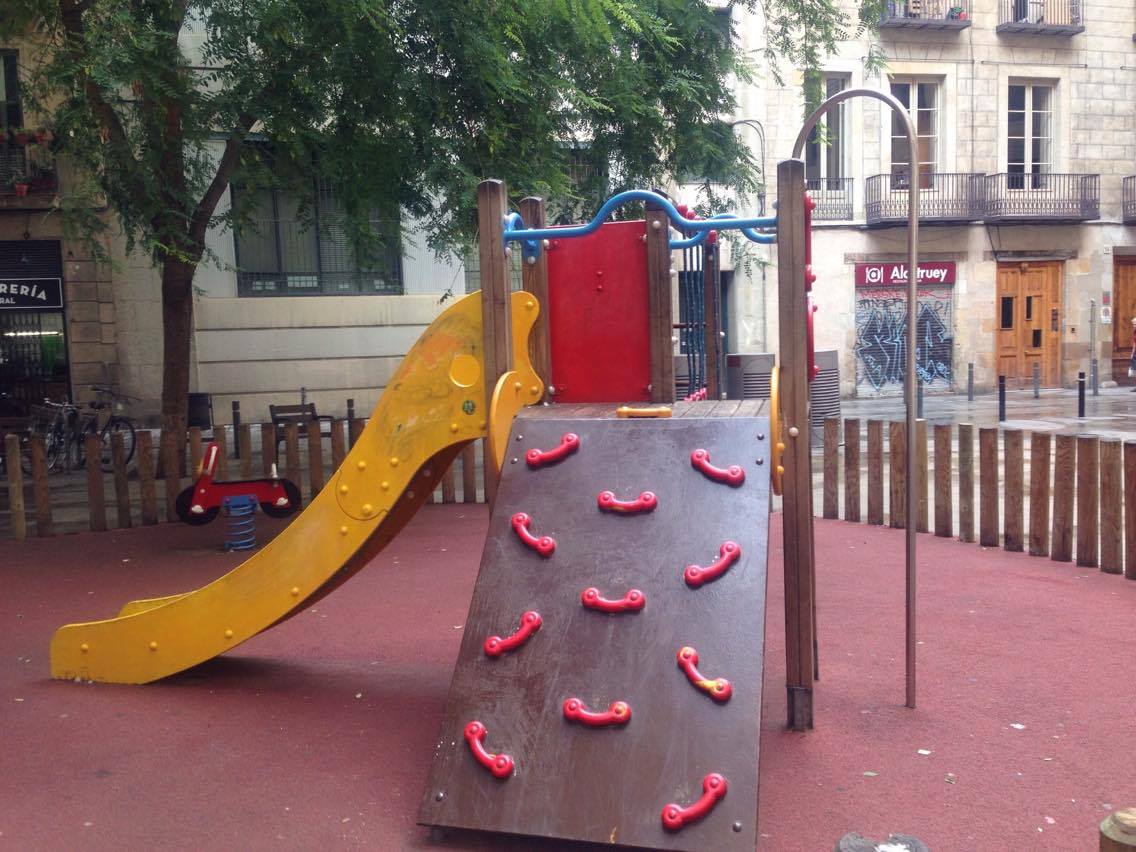
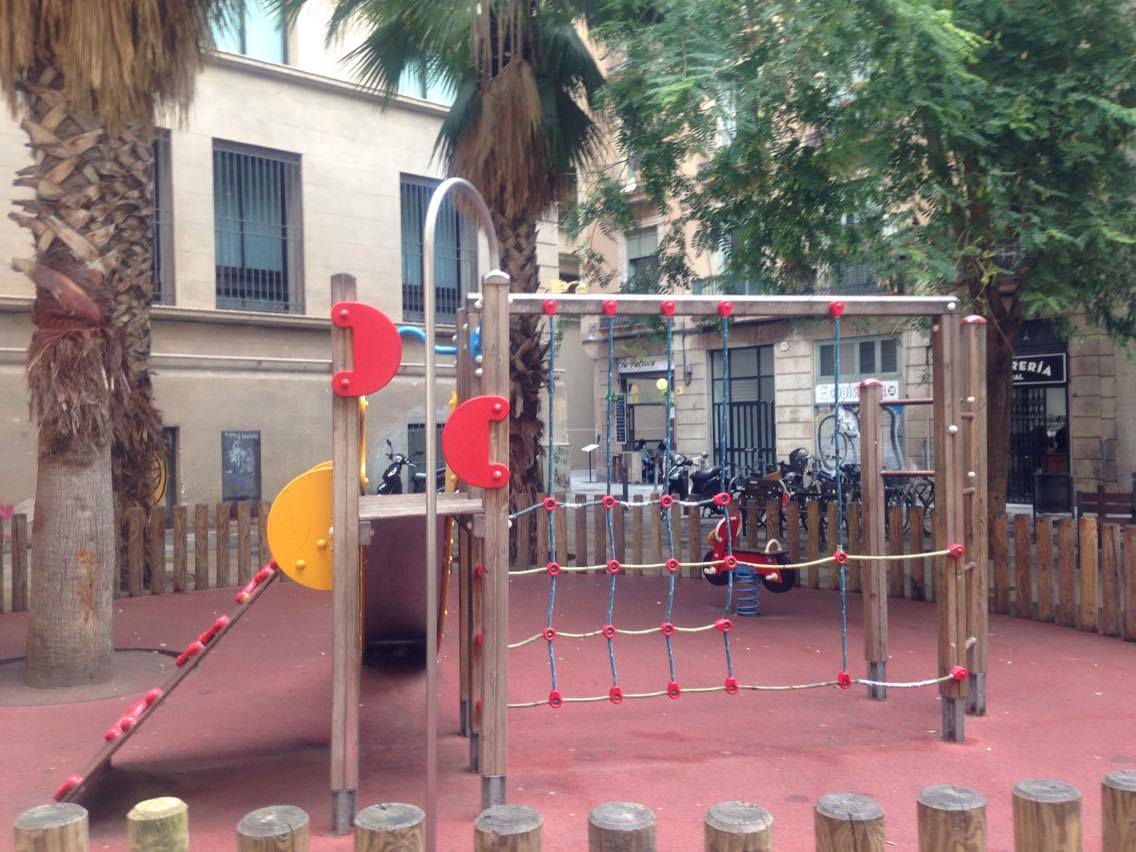
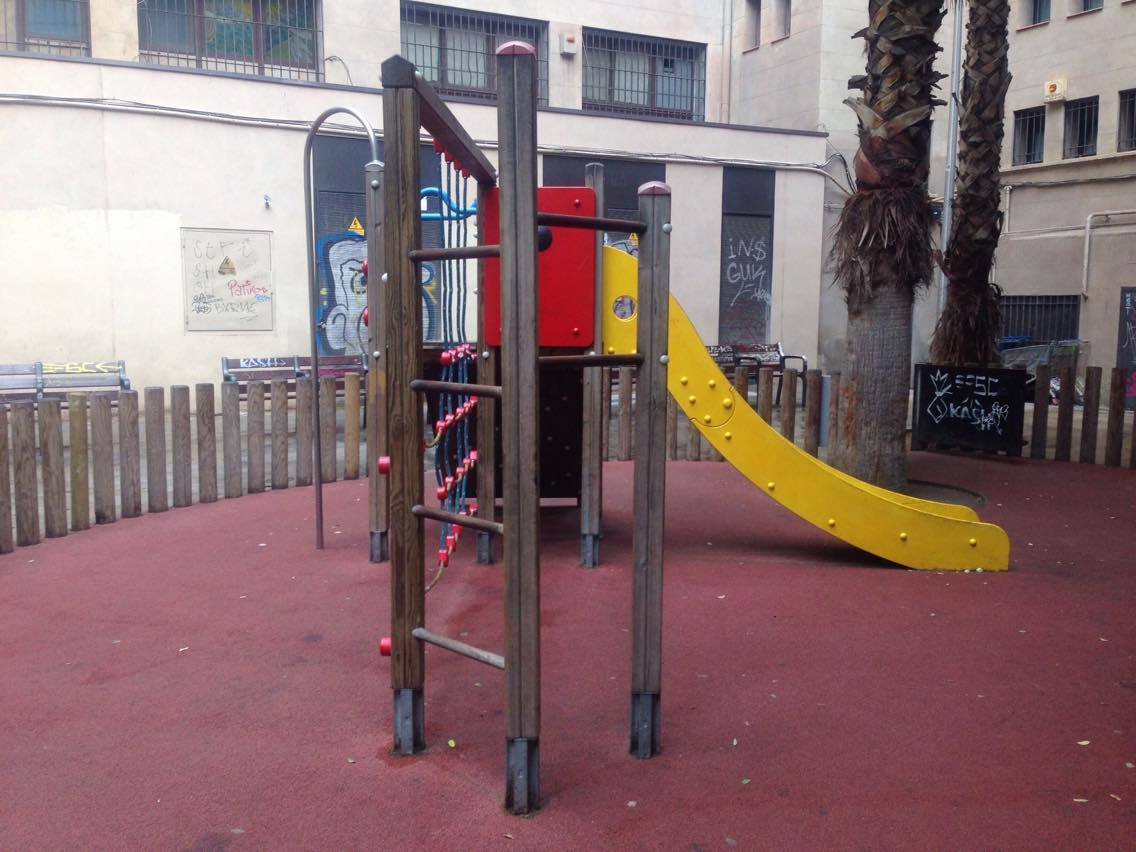
These are pictures of the same jungle gym from three different angles. So let's break it down (Ppssstt you may want to sit down because this is where I start to blow your mind).
1. Space for players = the whole playground is the level for the player. For most playgrounds you have to open a gate to enter. This is the equivalent of loading into a level.
2. Objective = The slide, as kids we mostly wanted to get to the top to go down the slide.
3. Puzzle = how does the kid/player get to the slide?
4. Options = multiples paths to take to the top.
5. Traversal paths = climb up ropes or rock climbing section.
6. Pay off = is going down the slide
Looking at these we can see that there are some huge similarities between a level we play in computer games and Jungle Gyms. We may not have any HUD or objective marker telling the child/player where to go but the child knows what it's objective is and will figure out a way to achieve it. This truly is our first encounter with a level.
Another area in which both levels and jungle gyms cross paths is how they expand and increase with difficulty.
One of the reasons levels grow is because of either to increase the difficulty, progress the story or the player gains new abilities/mechanics. Which is the same with kids and jungle gyms. Think about it when kids first start playing on slides they are only a couple steps high, with one route to the slide.
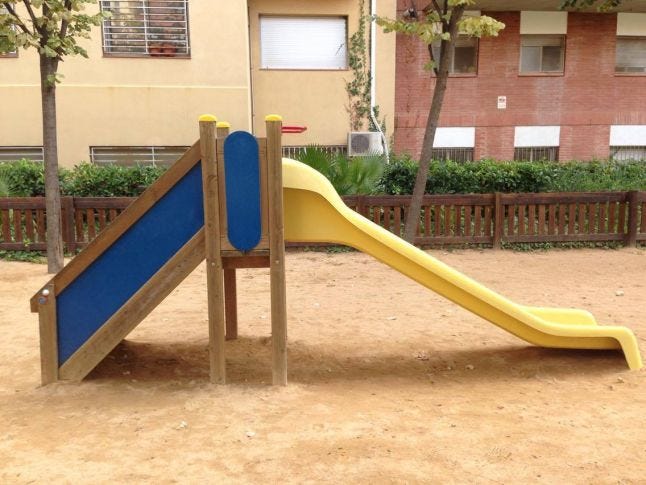
This because young children are still trying to find balance when walking. Their muscles are not strong enough to lift their legs high enough. Yet we still give a strong pay off, a slide! Which teaches the kids, firstly how fun slides are! (Don't judge me I totally went down that slide when no ones was looking) As well as teaching them that the pay off comes from going down the slide so kids need to make their way to the top of the slide.
Similar to any first level of a game. Players will normally have one or a select few mechanics to use while making their way through the first level. This gives us a chance to teach players how to use that mechanic and slowly introduce new elements to expand on that mechanic or puzzle.
Let's take 'Super Meat Boy' as an example. Player must first jump over these static buzzsaws.

Once the player has mastered this, they will then will face moving buzzsaws! Which move along the X-axis, which teaches players to jump with timing.

The final form of the buzzsaws is ones which are attached to a robotic arms which spin 360 degrees which again is about jumping with timing but making that decision is much more a split second reaction time than the previous two.
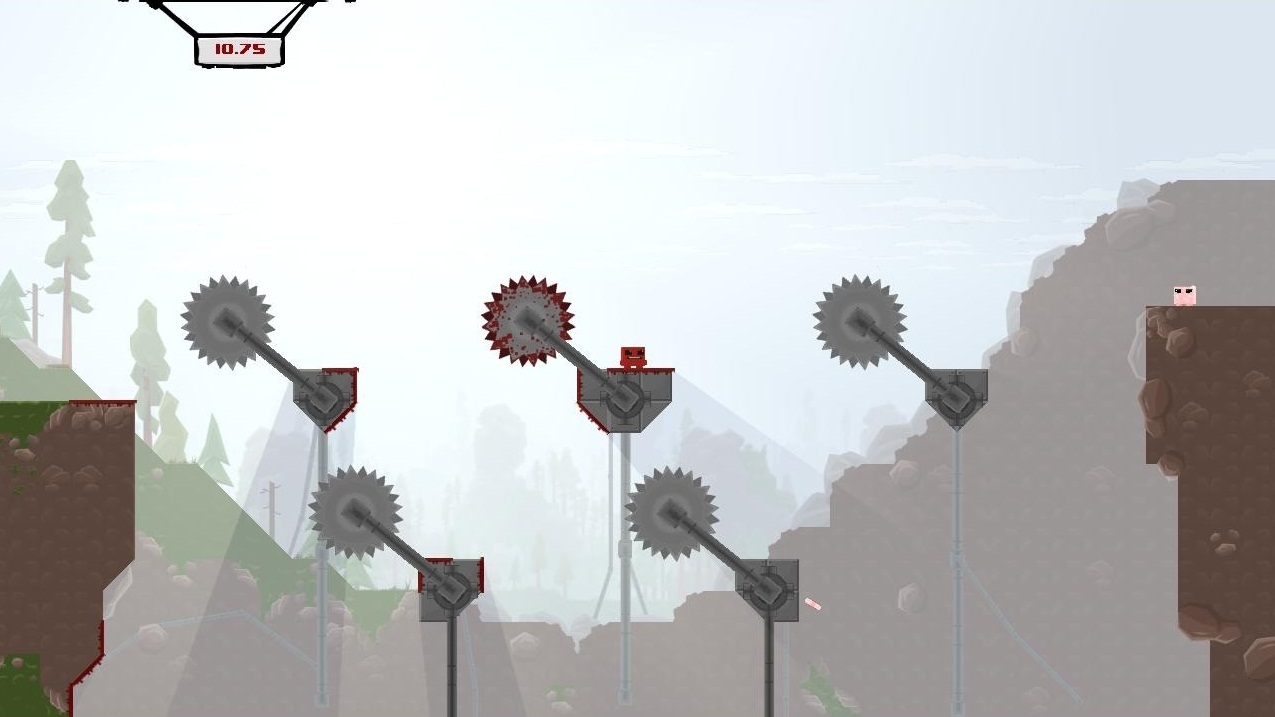
Like that jungle gyms know older kids have the strength to climb higher and know how to hold on, as well as mastered their balance. So we end up with these types of jungle gyms.

Any one can look at this and see that this is meant for older and more experienced kids.
Now hopefully you can see what I see when looking at these real world levels, I want to break down what I think we as LDs can learn from them and may be able to apply to our own work (Disclaimer not all of this will be applicable to all types of levels).
This is a picture from Travis Hoffstetter's blog about traversal through levels and how every route needs to be considered.
With this we can see how all elements in the building have areas for players to travers to. With jungle gyms there are often layers of traversal, the structural beams holding up the upper floor are used by kids as obstacles to run around. The under side of the slide can be used as a cave for kids to hide under, as well as a way to move from the top floor to the bottom or as a ramp from the ground floor to the top floor.
Another thing I notice when looking at these is that most traversal paths connect to another in some way or another. With this kids can use the paths that are easy to use like steps, but once they have more experience they can start to experiment and see what leads where and how everything can connect. Example if we look at the park above it has these ropes kids can climb up, but they can shimmy across to the ledge of the upper floor.
The lesson here can be rewarding players for experimentation. We can have the standard paths but maybe players can get new items or earn more xp for finding a more creative way in, or rewarded with a visual vista. It also lends itself to replayability for levels.
I mentioned earlier about the slide being the objective for the kids, but that is not technically true, as the objective may change. One kids may be to go down the slide, while the other could be to make it across the bridge. What the jungle gym does well is it provides multiple options for the kids and then they chose their objective while playing.
This shows how to reuse levels with multiple objectives. Now the new Hitman game is good at this and in The Division - Underground we also tried this as well. As long as we are providing exciting spaces we can re-use them for different objectives.
One of the final lessons is Embrace the chaos as devs we all know that when someone plays your level for the first time, they will not play it how you expected them too. It is the same with a jungle gym, how many of us climbed up the slide? I know me and my family, and friends did when we were younger. This is okay though as kids are still having fun, they are still smiling and laughing while doing this. If players do something unexpected while playing your level and are having a great time, think if you can actually make that part of your level. Our job is to make people have fun, so never forget that.
There are many more lessons to be learned from Jungle Gyms but I will let you study them to see what you can find. My main conclusion here is that like anything in life we as creators can study and learn from it. Take the time and see what else brings you inspiration
Hope you have enjoyed these thoughts from my mind. If you want to know more about what I am doing then please follow me on Twitter or Instagram:
Read more about:
Featured BlogsYou May Also Like